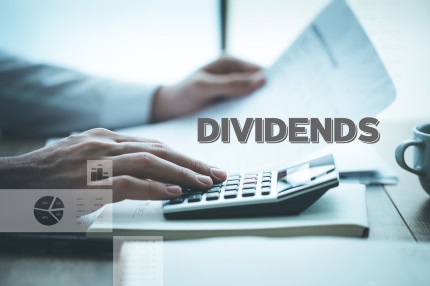My experience has been that it is best to be cautious when everyone else is piling into a trade. A consensus on Wall Street often turns out to be completely wrong.
The latest example of this occurred a year ago, after a bad year for both stocks and bonds in 2022. Wall Street was telling everyone that a recession in 2023 in the U.S. was a near-certainty.
The reality is, we are still waiting for that recession.
A year ago—certain that a recession was imminent—investors poured more than $60 billion into exchange traded funds (ETFs) that focused on dividends. That trade has turned out to be a painful one in many cases. Let me explain…

The Wrong Dividend Investment
Rather than giving shelter from an expected stormy economy, the largest dividend ETFs have been left behind by an AI-obsessed market in 2023. This year to date, the S&P 500 has gained 19% and the Nasdaq 100 has surged 47%!
Meanwhile, at the bottom of the dividend ETF leaderboard—as reported in an article by Bloomberg’s Emily Graffeo—is the $18 billion iShares Select Dividend ETF (DVY), down 5.4% on a total return basis after its bets on utilities and financial stocks fizzled. As Graffeo wrote:
Investors wanted exposure to companies with a history of paying out profits as a precaution amid the Federal Reserve’s most aggressive tightening cycle in 40 years. Instead, they were saddled with underperforming companies that proved especially vulnerable when yields shot higher.
With a small handful of growth-oriented tech stocks—the so-called “Magnificent Seven”—dominating the market’s performance in 2023, it was a challenging environment for dividend-paying value stocks. In effect, the flood of cash late last year into dividend strategies ETFs meant investors dove into the likes of banks and utilities stocks and out of Big Tech megacaps, which—thanks to AI mania—have driven the market gains.
If we look at the fund flows for these dividend ETFs in 2023, they are pitiful. According to Bloomberg Intelligence, a mere $786 million has flowed into these dividend ETFs so far this year. That’s the lowest level of inflows since 2006!
Compare that to ultra-short duration bond ETFs, which have pulled in $30 billion so far this year after receiving a record $42 billion in 2022 from investors.
One Dividend ETF to Consider
Is now the time to move back into these dividend ETFs that have performed so poorly in 2023?
I’m not so sure—the AI mania is cooling, but still ongoing.
So, I’m compromising and moving to a middle ground with the Vanguard Dividend Appreciation ETF (VIG). It holds nearly one quarter of the fund in technology stocks, a rare feature for dividend funds. That’s why its year-to-date return is 9.27%, much better than its dividend ETF peers.
This ETF seeks to track the performance of the S&P U.S. Dividend Growers Index (314 stocks). Its focus is on large-cap equities, emphasizing stocks with a record of growing their dividends year over year.
The largest stock sectors in its portfolio are:
- Information technology: 22.4%
- Financials: 18.3%
- Healthcare: 15.5%
- Industrials: 13%
- Consumer staples: 12.3%.
I would call this a blend fund, with a mix of growth and value sectors.
Here is the list of the fund’s top 10 holdings:
- Microsoft: 5.3%
- Apple: 4.4%
- UnitedHealth Group: 3.64%
- ExxonMobil: 3.11%
- JPMorgan Chase: 2.97%
- Visa: 2.66%
- Johnson & Johnson: 2.62%
- Procter & Gamble: 2.61%
- Broadcom: 2.47%
- Mastercard: 2.31%
The fund pays dividends quarterly; its current distribution yield is 2.06%. And as is typical for Vanguard funds, its expense ratio is miniscule at 0.06%.
You will not get a high yield with VIG, but you will participate somewhat if technology stocks keep moving skyward. This ETF is a buy in its current range around $163 a share.
This Map Holds the Key to a $4.5 Trillion Energy Revolution
You must get in by November 8th for the best chance at growing a $91,761 yearly income stream from just ONE stock as it happens! Click here for the full details.






